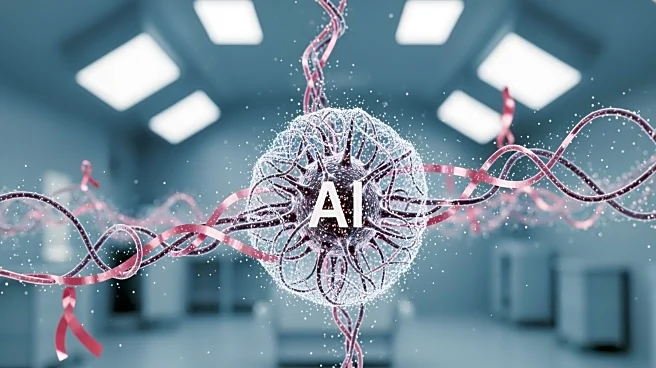What's Happening?
A new study introduces HeteroSync Learning (HSL), a distributed learning framework designed to address data heterogeneity in medical imaging while preserving privacy. HSL utilizes a shared public dataset and a custom auxiliary learning architecture to align
data representations across different nodes without compromising privacy. The framework has demonstrated performance comparable to centralized learning and outperforms several state-of-the-art methods, including FedRCL and FedCOME, by up to 40% in AUC improvement. HSL's design allows it to generalize well to unseen populations, making it effective in diverse clinical scenarios, from small clinics to rare disease populations.
Why It's Important?
The introduction of HSL is significant as it addresses the challenge of data heterogeneity, which often leads to biased AI models in medical imaging. By ensuring consistent performance across diverse datasets, HSL enhances the reliability of AI applications in clinical practice. This advancement could lead to more accurate diagnostics and treatment plans, benefiting healthcare providers and patients alike. The framework's ability to maintain privacy while improving model performance is crucial in an era where data security is paramount.
What's Next?
Further evaluation of HSL in additional clinical domains, such as breast cancer and epidemic diseases, is planned to validate its generalization ability. The framework's adaptability to dynamic clinical environments, including real-time data updates and new node incorporations, will be explored. Incorporating continuous learning approaches could enable HSL to adapt to evolving data patterns without needing to retrain from scratch.
Beyond the Headlines
HSL's approach to mitigating data heterogeneity could set a precedent for future AI developments in healthcare, emphasizing the importance of privacy-preserving technologies. The framework's success may encourage more research into distributed learning models that can handle diverse and complex datasets, potentially transforming how medical AI is developed and implemented.













